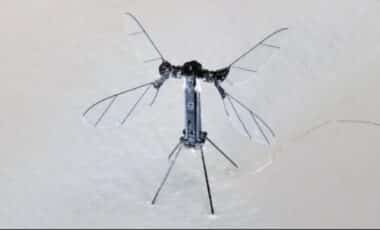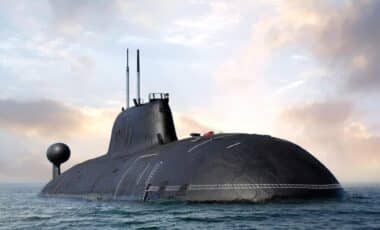Being there . . . . by 10 May of 1940 when the Allied bombing of Germany began. One worryafter another began piling up for the German people who kept asking why the Fuehrer was notvisiting the bombed cities, railroad yards, and armament industries. “Why”, they asked, “isGoering nowhere to be seen?”, “Why doesn’t our beloved Hitler come before us and explainthe present situation? We hardly know how to save human beings, let alone our own familiesand neighbors, who, because of the daily bombings, are being thrown on the ground burning todeath, or flung into the flames by 150 mile per hour bomb concussion winds.” By 1945, most ofGermany was aflame. And, of course, the German people were right. None had ever been soshocked before. Not even in World War I had the citizens witnessed fire typhoons. They soonrealized that resistance to systematic day and night bombing was impossible. Furthermore, theresolute night-flying RAF and daytime USAAF fliers had a ton of bitter lessons to pile on thedefenseless, overwhelmed German population.GERMANY’S AIR STRATEGY TO WIN WORLD WAR II, OFFENSE IN LIEU OF DEFENSE OFDEUTSCHLAND, HAD FAILED MISERABLY, MEANING THE FATE OF THE NAZI NATION WAS NOWSEALED. YES, AIR CHIEF HERMANN GOERING ADMITTED TO HITLER THAT ALLIED BOMBERSWERE GETTING THROUGH BECAUSE ACTIVE FIGHTERS AND ANTI-AIRCRAFT ARTILLERY WEREINSUFFICIENT. BUT THE FUEHRER BELIEVED THE DAY AND NIGHT BOMBING WOULDHARDENED THE GERMAN PEOPLE TO PREPARE FOR THE WORST, THE ALLIES INVADING FROMTHE WEST AND THE SOVIETS FROM THE EAST. SINCE HITLER’S PASSIVE AERIAL DEFENSESRANKED TENTH AMONG THE NATIONAL PRIORITIES, ONLY 2,046 AIR RAID SHELTERS HAD BEENBUILT FOR THE SEVERAL MILLION BERLINERS BY SEPTEMBER 1940. BY 4 JULY 1945, THE DAYTHE FOUR-POWER OCCUPATION OF BERLIN, AND ALL OF GERMANY, TOOK EFFECT, LESS THAN2% OF THE CAPITAL’S POPULATION, AND 1% OF THE REST OF THE GERMAN PEOPLE, HAD BEENPROTECTED AGAINST THE DEVASTATING AIR ATTACKS. THE AIR BATTLES OVER THE COUNTRYWERE CERTAIN TO BE LOST. NOW, WITHIN THE LAST FEW WEEKS, THREE STARTLING NEWOSPREY PUBLISHING TITLES TELL WHY THE LUFTWAFFE FAILED SO MISERABLY TO PROTECT THEGERMAN PEOPLE.All three highly recommended by Don DeNevi“HAMBURG 1940–45 – – The long war against Germany’s great port city”, by Richard Worrall,Illustrated by Mads Bangso. OSPREY PUBLISHING/Bloomsbury Publishing Plc; 2024, AirCampaign Series, 96 pages, 9 ¾” x 7 ¼”, $25. Visit, www.ospreypublishing.com;“Me 163 vs ALLIED HEAVY BOMBERS – – Northern Europe 1944 – 1945”, by Robert Forsyth.OSPREY PUBLISHING/Bloomsbury Publishing Plc; 2024, Osprey DUEL Engage the Enemy Series,80 pages, 9 ¾”x 7 ¼”, $23. Visit, www.ospreypublishing.com;“Fw 190 STURMJAGER – – Defense of the Reich 1943-45”, by Robert Forsyth. OSPREYPUBLISHING/Bloomsbury Publishing Plc; 2024, Dogfight Series, 80 pages, 9 ¾”x 7 ¼”, $23. Visit,
www.ospreypublishing.com.
A little after midnight on 25 July 1943, the low, dull, monotonous, murmuring sounds ofenemy aircraft approaching could be heard throughout the port city. Air raid alerts werealready sounding. Local radio warnings told Hamburg’s 1.5 million+ to rush into basements andthe city’s few shelters. The Royal Air Force would be unloading their own British-made heavybombs all over the area. Seconds mattered. THEN ALL HELL BROKE LOOSE. Suddenly, eightfirestorms were consuming the metropolis with 1,500 citizens dead or dying. But the death anddestruction were far from over. By noon that day, the U.S. Eight Army Air Force would bedropping its own load, American made, turning the entire port and its cargo ship into a hugeinferno. A once beautiful city and proud port were gone, and no one could say with certaintyhow many more Germans perished since uncounted eastern refugees fleeing the advancingRussians had flooded the Hamburg vicinities for months. Drawing on a wide range of primaryand secondary sources, and packed with photos, artwork, maps, and 3D diagrams, this is animportant new history of the air campaign against Nazi Germany’s industrial and naval heart,Hamburg.Of course, WWII aviation buffs know all about the small, fast, “bat-like” looking aircraft flyingclose and past the USAAF and RAF formations. It indeed resembled a bat. It was the Luftwaffe’sextraordinary Messerschmitt Me 163 interceptor – – which used volatile rocket fuel to reachhigh altitudes at unprecedented speed – – while at the same time making its operational debut.Luftwaffe historian Robert Forsyth draws upon rare, first-hand accounts, archive photography,and newly commissioned artwork to chronicle the development and deployment of what wasthen the world’s fastest aircraft. In short, this intriguing study documents the birth of a newform of aerial warfare, one contrasting sheer mass production against cutting-edgeaeronautical technology.The “Dogfight Series” is unequivocally the leader among the multiply-series Osprey initiatedand, today, constantly enriching for reader collection, personal library building, nightly readingsatisfaction. “Fw 190 Sturmjager – – Defense of the Reich 1943 – 45” explores the highlydangerous close-range missions carried out by the men who flew it. Some were skilled aces;others were fresh from training schools; and a number were volunteers willing to sign an oathvowing to bring down a Fw 190 bomber, single-handed, at all costs – – even if it meant rammingthe enemy aircraft. Robert Forsyth puts us readers in the cockpit of a Sturmjager whiledefending the Fatherland from RAF and USAAF bombers protected by powerful Allied escortfighters.To learn more of the endless titles Osprey offers via its multiple series, visitwww.ospreypublishing.com. Then, sign up to receive free-of-charge information about past,present, and future all things Osprey. Note: other than Schiffer, Naval Institute Press, Pen &Sword, and McFarland, look no farther than Osprey for the best military books being published
today.








